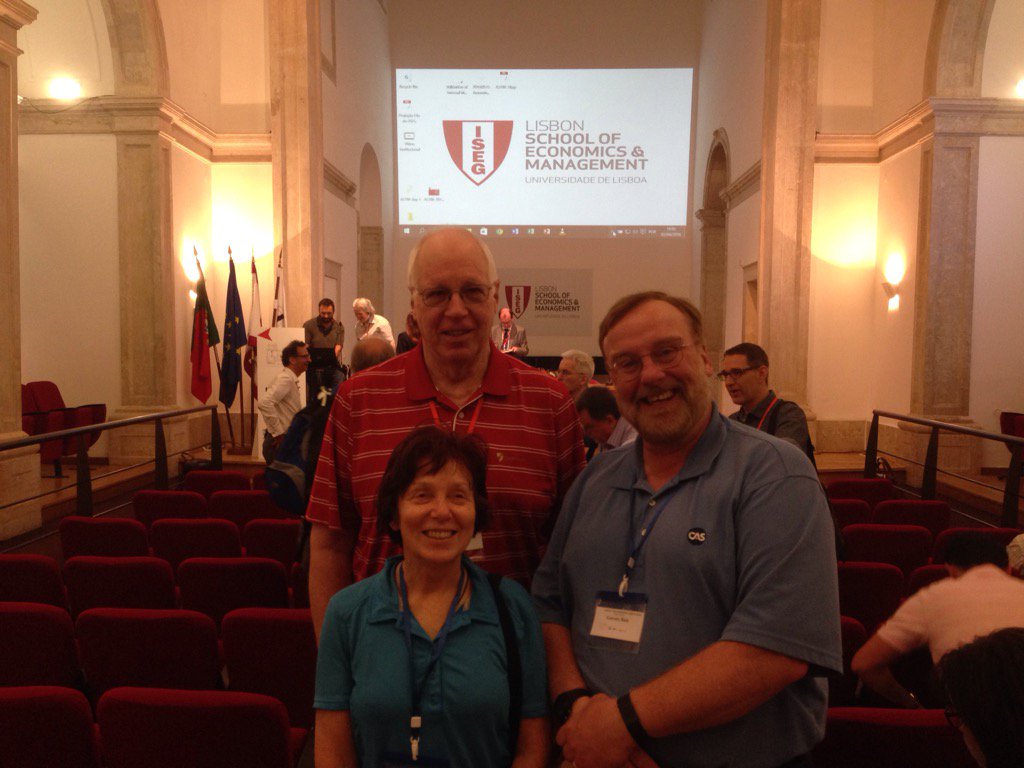I’m just back from the annual ASTIN Colloquium, held June 1-3 in Lisbon, Portugal, on the campus of the Lisbon School of Economics and Management (known locally as ISEG, “Instituto Superior de Economia e Gestão”). The meeting was a valuable and enjoyable experience – although I was delighted to return home and experience both air conditioning and ice in my drinks!
ASTIN (Actuarial STudies In Non-life insurance) is the property-casualty section of the International Actuarial Association, and I’ve been a member for many years. ASTIN’s main focus is on promoting research, and its annual international colloquium, bringing together both academics and practitioners from all over the world, is (along with the ASTIN Bulletin) the primary vehicle for disseminating its research.
At this year’s colloquium, there were about 150 attendees and 50 research presentations, several of which were of relevance and interest to CAS members. Of particular interest to many practitioners will be the soon-to-be-published “ASTIN Worldwide Non-Life Reserving Practices Report.” This report summarizes a thorough survey of loss reserving practices in companies across dozens of countries: data collected include the types of reserving techniques used, the software employed, and the frequency of analysis. *Spoiler Alert* The most frequent combination of characteristics is quarterly analyses, in Excel, using the basic chain-ladder approach. But the more specific and detailed results – percentages of companies both by country and worldwide, and across many possible reserving techniques embracing a wide range of sophistication – should be of interest to many CAS members.
Titles of other presentations of potential interest included:
- Assessing Psychological Attitudes to Risk-Taking and Risk Management
- Backtesting Expected Shortfall: A Simple Multinomial Test
- Chain-Ladder Method: Dynamic Run-Off Uncertainty Analysis
- Chain Ladder Reserve Uncertainties Revisited
- Coherent Incurred Paid Models of Claims Reserving
- Correlations Between Insurance Lines of Business: An illusion or a real phenomenon? Some methodological considerations
- How Societies Manage Risk
- Insights to Systematic Risk and Diversification Across a Joint Probability Distribution
- Telematics Insurance: Impact on Tarification
- Why Adverse Selection Need Not Be Adverse
Abstracts (and sometimes full presentations or papers) of these can be found on the colloquium website. Prior to attending, I had contacted the authors / presenters of each of these ten projects to express my personal interest, and to express the hope that we could chat at the colloquium (an opportunity that was fulfilled with almost all the authors). After seeing the presentations, I believe several of these have potential for publication in our scholarly journal, Variance.
Historically, ASTIN has been a bit of a hard sell to CAS members. Less than 2% of our members also have membership in ASTIN – and indeed, the organization is not for everyone. But I do think that ASTIN has great potential value for a larger segment of our membership. True, the section’s research has sometimes been esoteric relative to the interests of CAS practitioners, but I sense that might be starting to change. And if we can get a critical mass of CAS members engaged in ASTIN and attending the colloquia (I believe that there were only three of us in Portugal), we may be able to leverage that participation and steer or develop some activities toward our interests. There are certainly some interesting things going on amongst our counterparts around the world – we can only benefit from enhancing our dialogue with them!
The 2017 ASTIN Colloquium will be held August 20-24, in Panama City, Panama. I trust they will have air conditioning!!



